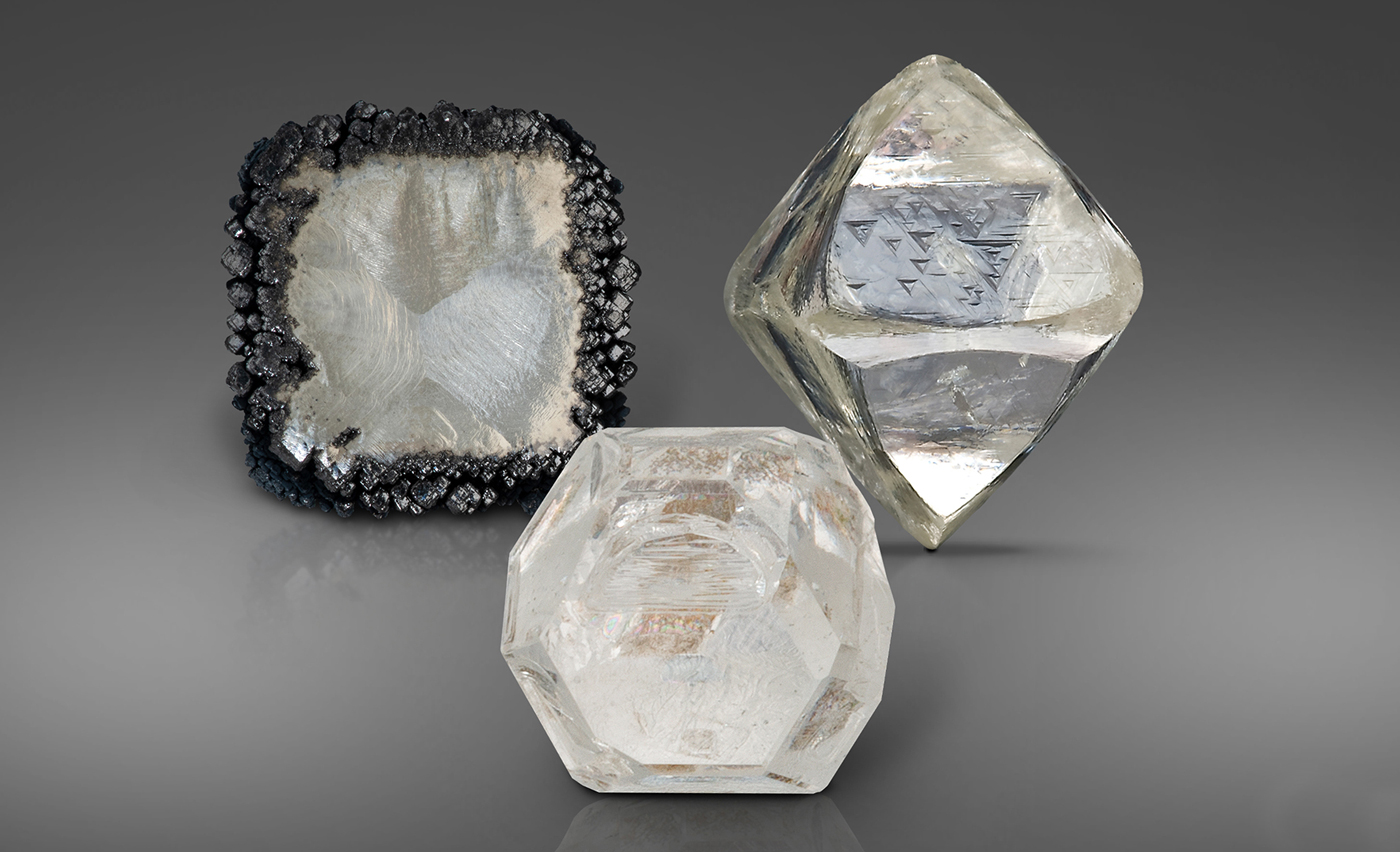What Are Lab-Grown Diamonds?
September 06 2022 – Lamoon Test

Laboratory-grown diamonds are increasingly available in greater quantities, higher quality and new colors at price points that many find attractive. It is no wonder then that laboratory-grown diamonds are a growing presence in the marketplace. What are they and how are they different from natural diamonds?
What are laboratory-grown diamonds?
Laboratory-grown diamonds have essentially the same chemical, optical and physical properties and crystal structure as natural diamonds. Like natural diamonds, they are made of tightly-bonded carbon atoms. They respond to light in the same way and are just as hard as natural diamonds. The main differences between laboratory-grown and natural diamonds lie in their origin. Think of it this way: laboratory-grown diamonds are like ice from your refrigerator, while natural diamonds are like ice from a glacier. They are both ice, although their formation stories and the age of each are very different.

This butterfly features a 1.3 carat laboratory-grown marquise center diamond, with 5.67 carats total weight of diamonds. Courtesy: Shiphra Jewelry
Natural diamonds formed millions to billions of years ago in Earth’s mantle then were explosively carried by kimberlite and lamproite volcanoes to Earth’s surface, often carrying fascinating inclusions within them. The oldest laboratory-grown diamonds are decades old; they are created in laboratories or large factories, most commonly using the High-Pressure, High-Temperature (HPHT) method or the Chemical Vapor Deposition (CVD) method. Laboratory-grown diamonds appear identical to natural diamonds to the unaided eye and typically require testing by a laboratory with advanced instruments to be identified.

This laboratory-grown diamond (left) and natural diamond (right) cannot be told apart using the unaided eye.

This ring contains 17.31 carats of laboratory-grown diamonds, including two radiant cut Fancy Vivid Pink laboratory-grown diamonds. Courtesy: Shiphra Jewelry
Laboratory-Grown Diamond Timeline
- 1950s: Union Carbide produces the first Chemical Vapor Deposition (CVD) diamonds in 1952. Others produce diamonds using the high pressure, high temperature (HPHT) method soon after. These diamonds are used for industrial purposes, such as in telecommunications and laser optics and as abrasives and more.
- 1970s: General Electric researchers create the first gem-quality laboratory-grown diamonds. They are of high enough clarity and large enough size to be used in jewelry. GIA scientists publish the first scientific study of laboratory-grown diamonds in 1971.
- Mid-1980s: Manufacturers grow commercial quantities of gem-quality laboratory-grown diamond crystals. These lab-created diamonds are initially mostly small and yellowish or brownish in color, but their quality improves over the ensuing decades.
- 2000s: Gem-quality diamonds are created using the chemical-vapor deposition (CVD) method, which requires lower pressures and temperatures than the HPHT method.
- Mid-2010s: Colorless laboratory-grown diamonds are available in the jewelry market in commercial quantities. Both HPHT and CVD continue to be popular methods of laboratory-grown diamond production.

Different growth methods produce different diamond crystal shapes. Seen here are a CVD (left), HPHT (middle) and natural diamond crystal (right). The CVD diamond is edged in non-diamond carbon from the growth process. The natural octahedral diamond is covered in etch marks called trigons.
How are laboratory-grown diamonds made?
There are two main processes used to create laboratory-grown diamonds:
1. High Pressure, High Temperature (HPHT)
With this method, laboratory-grown diamonds are produced using high-pressure, high-temperature conditions similar to what natural diamonds experience in the earth. HPHT diamond growth occurs at pressures of 5–6 GPa (roughly equivalent to the pressure exerted by a commercial jet airplane if balanced on the tip of a person’s finger) and at temperatures of 1300–1600°C.
Lower-quality diamonds, whether natural or laboratory-grown, can also be put through the HPHT process to improve color. In addition to making diamonds more colorless, this process can also be used to change the color of diamonds to pink, blue or yellow. The diamond would then be called a “treated” diamond. This is disclosed in GIA reports.

Seen here is an HPHT press used to create diamonds. It approximates the high-pressure, high-temperature environment that natural diamonds experience within the earth. Courtesy: Suncrest Diamonds

These diamonds were all grown using the HPHT method. The background shows a DiamondView image of a laboratory-grown diamond with a cross-shaped fluorescence pattern, a well-known diagnostic feature of HPHT diamonds.
2. Chemical Vapor Deposition(CVD)
This technique enables scientists to grow laboratory-grown diamonds using moderate temperatures (700°C to 1300°C) and lower pressures. Carbon-containing gas is pumped into a vacuum chamber and deposits onto a diamond seed, crystallizing as laboratory-grown diamond. The eventual size of the diamond depends on the time allowed for growth.

Laboratory-grown diamonds are being grown in increasingly large sizes. This 16.41 carat CVD diamond with G color and VVS2 clarity is the largest CVD diamond analyzed by GIA to date. Photo: Towfiq Ahmed/ GIA
How are laboratory-grown diamonds identified?
Laboratory-grown diamonds require advanced testing in a gemological laboratory to be identified with certainty. At laboratories like GIA, scientists and graders used sophisticated instruments to analyze diamond strain patterns, trace element composition, inclusions, fluorescence, phosphorescence and more in order to separate laboratory-grown diamonds from natural. These factors are different due to the vastly different formation conditions of laboratory-grown and natural diamonds.

These HPHT-grown diamond melee display strong phosphorescence following exposure to short-wave UV radiation. Phosphorescence is rare in natural diamonds.
To help jewelers separate natural and laboratory-grown diamonds, GIA created the GIA id100 a convenient desktop instrument that can distinguish natural diamonds from laboratory-grown diamonds, diamond simulants and some treated diamonds in under two seconds. Simply point the probe at a loose or mounted stone to get a simple “Pass” for natural diamonds or “Refer” for stones that need further testing.
In the event that a stone needs further testing, it can be sent to a gemological laboratory such as GIA for identification. If the stone proves to be laboratory-grown, GIA will issue a GIA Laboratory-Grown Diamond Report.

